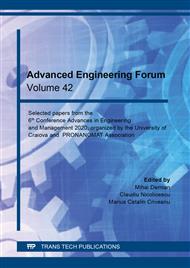p.3
p.9
p.17
p.24
p.30
p.36
p.42
p.50
p.57
Applying the Masteralloy Concept for Manufacturing of Sinter Hardening PM Steel Grades
Abstract:
Sinter hardening is a powder metallurgy processing route that combines the sintering and the heat treating processes in one step by gas quenching the components immediately after they have left the high temperature zone of the furnace. It is both economically attractive and ecologically beneficial since it renders deoiling processes unnecessary. The slower cooling rates associated with gas compared to oil quenching however requires special alloy concepts different to those known from wrought steels. In the present study it is shown that by admixing atomized masteralloy powders consisting of suitable combinations of Mn, Cr, Si, Fe and C to base iron or pre-alloyed steel powders, sinter hardening PM steel grades can be produced that transform to martensitic microstructure at cooling rates of 2-3 K/s as typical for industrial sinter hardening. This is confirmed by CCT diagrams and hardness measurements. However, metallographic investigations are also necessary because in sintered steels, the cores of the largest base powder particles are alloyed very slowly during sintering and therefore tend to result in soft spots in the sinter hardened microstructure which are mostly not discernible in the CCT diagrams. Here, even slight pre-alloying of the base powder with Mo and/or Cr is helpful, both increasing the hardenability of the steels compared to base plain iron and avoiding soft spots in the microstructure.
Info:
Periodical:
Pages:
17-23
Citation:
Online since:
September 2021
Keywords:
Price:
Сopyright:
© 2021 Trans Tech Publications Ltd. All Rights Reserved
Share:
Citation:


